How would you describe the year 2017?
Survival of the fittest?
In the insect world, it's more like "survival of the flittest."
If you've ever pulled up a chair in a pollinator garden and sat back and observed all the activity, sometimes it's like road rage on the freeway and aisle anger in the supermarket.
- Have you ever seen a male long-horned bee (Melissodes agilis) doing a protective fly-by, trying to save a food source for the female of his species?
- Have you ever seen a male long-horned bee challenging a Western tiger swallowtail seeking nectar from a Mexican sunflowers (Tithonia)?
- Have you ever seen a syrphid fly targeting a honeydew-laden lady beetle, aka ladybug, on a rose?
- Have you ever seen a honey bee and bumble bee racing for the nectar on catmint (Nepeta)?
You may if you plant a pollinator garden. Plant it and they--bees and butterflies and other pollinators--will come.
In Chinese astrology, 2017 was The Year of the Rooster. Coming Jan. 1: The Year of the Dog. But there's no "Year of the Insect."
If entomologists had their way, one of the 12 animals of the Chinese zodiac (rat, ox, tiger, rabbit, dragon, snake, horse, goat, monkey, rooster, dog and pig), would be switched to an insect. Insects matter. Indeed, scientists trace the first known fossil record of insects back some 400 million years ago. The insect? A springtail.
Insects easily outnumber us and all other life forms. The population of the world today is 7 billion, according to a World Population Clock. Insects? "At any given time, it is estimated that there are some 10 quintillion (10,000,000,000,000,000,000) individual insects alive," says the Smithsonian Institute. This amounts to to largest biomass of the terrestrial animals.
Other fascinating points to ponder from the Smithsonian Institute involve undescribed and described species:
"Most authorities agree that there are more insect species that have not been described (named by science) than there are insect species that have been previously named. Conservative estimates suggest that this figure is 2 million, but estimates extend to 30 million. In the last decade, much attention has been given to the entomofauna that exists in the canopies of tropical forests of the world. From studies conducted by Terry Erwin of the Smithsonian Institution's Department of Entomology in Latin American forest canopies, the number of living species of insects has been estimated to be 30 million."
"In the United States, the number of described species is approximately 91,000. The undescribed species of insects in the United States, however, is estimated at some 73,000." Four insect orders comprise the largest numbers of described species in the U.S.:
- Coleoptera (beetles): 23,700
- Diptera (flies): 19,600
- Hymenoptera (ants, bees, wasps): 17,500
- Lepidoptera (moths and butterflies): 11,500.
Today (the last Friday before the New Year) is a good time to think about "survival of the fittest" and "survival of the flittest" as we glance back at 2017 and look forward to 2018.
Happy New Year! And may all your gardens be pollinator gardens filled with bees and butterflies. And, a few syrphid flies, lady beetles...and...
Attached Images:
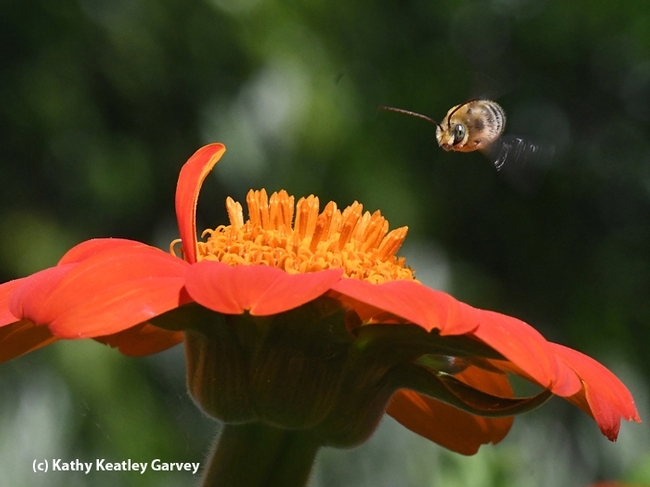
Have you ever seen a male long-horned bee (Melissodes agilis) doing a protective fly-by, trying to save a food source for the female of his species? (Photo by Kathy Keatley Garvey)
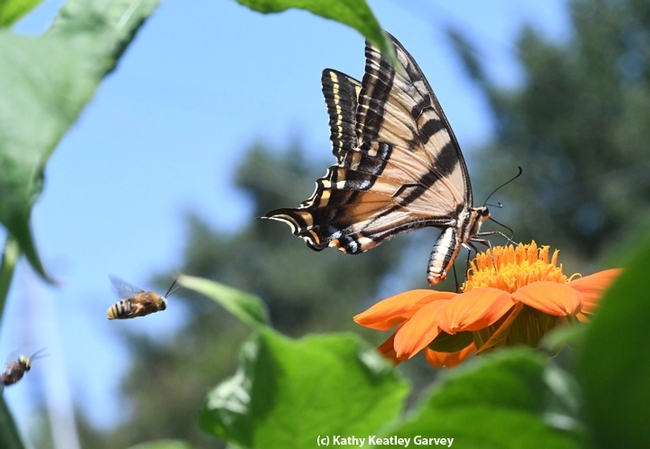
Have you ever seen a male long-horned bee (Melissodes agilis) challenging a Western tiger swallowtail seeking nectar from a Mexican sunflower (Tithonia)?(Photo by Kathy Keatley Garvey)
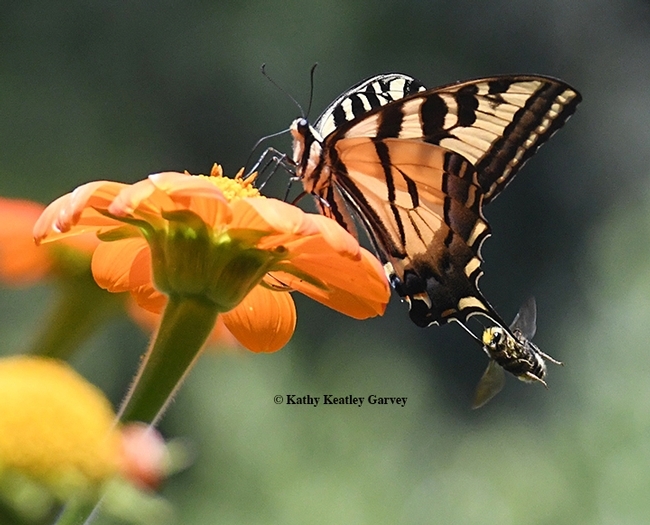
Have you ever seen a Melissodes agilis targeting a Western tiger swallowtail? A tiger by the tail? (Photo by Kathy Keatley Garvey)
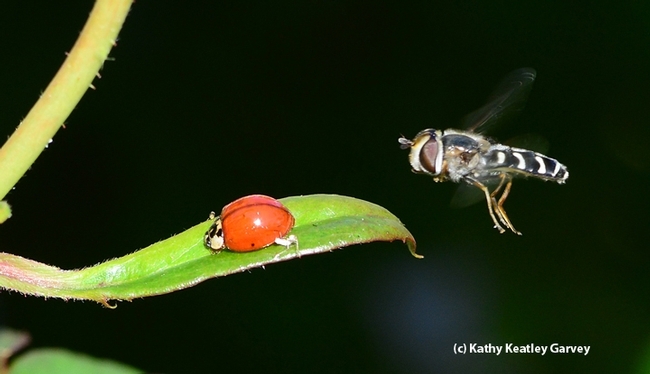
Have you ever seen a syrphid fly targeting a honeydew-laden lady beetle, aka ladybug, on a rose? This is an Asian lady beetle (Harmonia axyridis) and a syrphid fly, a Scaeva pyrastri, according to Martin Hauser of the California Department of Food and Agriculture. (Photo by Kathy Keatley Garvey)
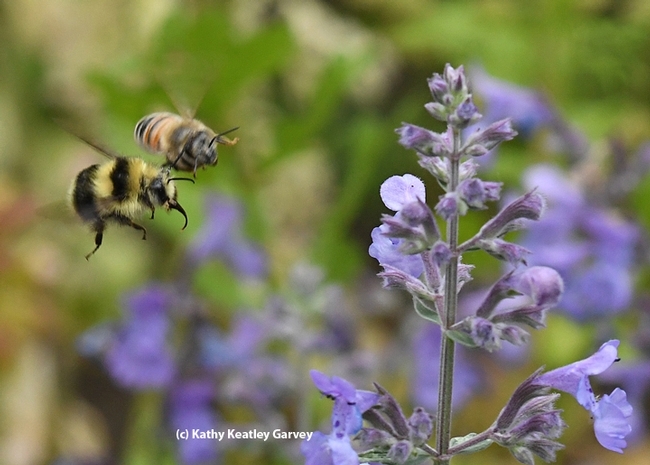
Have you ever seen a honey bee and bumble bee racing for the nectar on catmint (Nepeta)? The bumble bee is a Bombus melanopygus.(Photo by Kathy Keatley Garvey)